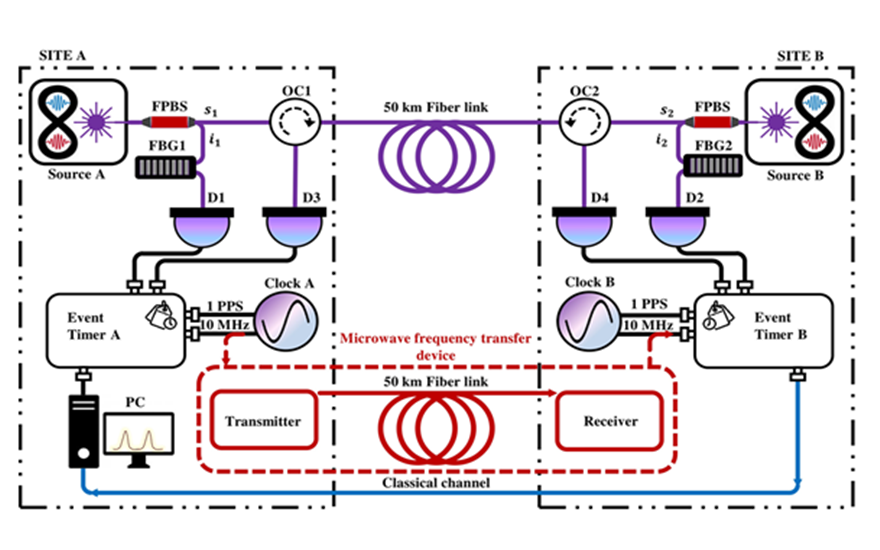Precise synchronization between distant clocks plays essential role in almost all types of precision measurements. In comparison with the traditional methods based on satellites, fiber optics has shown to be an advantageous channel for precise time and frequency transfer. Further cooperating with quantum technology, the fiber-optic quantum clock synchronization has shown great potential in enhancing the precision and providing better guarantee of security.
To further prove its advantage in practical applications, a research team from National Time Service Center the Chinese Academy of Sciences implemented two tests of synchronization performance between clocks apart on two types of optical fiber distances (7 km intracity fiber link and 50 km laboratory fiber link).
The results were published in Optics Express and Journal of Lightwave Technology ( Early Access ) respectively.
For the field test of two-way quantum synchronization between a H-maser located at the campus of NTSC and a Rb clock at LiShan Observatory (LSO) linked by a 7 km-long deployed fiber, results show that the short-term synchronization stability reached the intrinsic frequency stability of the Rb clock to the H-maser, which was measured as 32 ps at 30 s. The long-term synchronization stability was achieved to be 19.3 ps at 7680 s.
"This experiment proves the high potential of the two-way quantum clock synchronization in field applications to promote the synchronization performance," said by Prof. Dong Ruifang from NTSC.
Meanwhile, the research team demonstrated a fiber-optic two-way quantum clock synchronization experiment on a laboratory fiber with the distance reaching 50 km. With the common reference clock, a synchronization stability of 54.6 fs at 57300 s and an accuracy of 1.3 ps±36.6 ps have been achieved.

Schematic setup of quantum clock synchronization over 50 km fiber link.(Image by NTSC)
The achieved results in the experiment have promised a bright future of the two-way quantum clock synchronization for realizing femtosecond-scale-precision synchronization on metropolitan fiber links.
These implementations show the great potential of the two-way quantum clock synchronization in enhancing the synchronization precision of field applications based on metropolitan optical fiber links. Subsequently, intracity optic fiber over 50 km distance will be put on the agenda, hence promoting the application to more realistic scenario.
Related links:
Demonstration of 50 km Fiber-optic two-way quantum clock synchronization
CONTACT:
XIONG Tiantian
National Time Service Center, CAS
 Print
Print